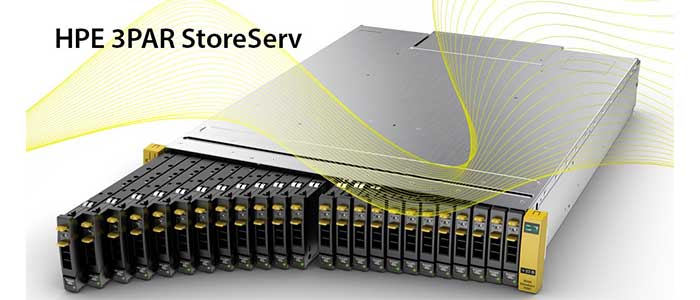You need to go for storage devices that are reasonably priced. That’s why HPE offers 3PAR storage devices to its customers. This device meets all the needs of an organization in the field of information storage and its design is based on virtualization.
HPE 3PAR Storage History
3PAR was founded in 1999 in California by three hardware experts, and the name PAR is derived from their names. In 2010, the company was selected by Forbes Magazine as one of the top four IT companies in the field of development.
In August 2010, DELL Company made an offer to buy the company, which 7 days later HP made another offer, which resulted in HP buying the company for $ 2.35 billion, and now 3PAR products called HPE 3PAR are introduced to the market.
HPE 3PAR Advantages
HPE 3PAR storage devices have great capabilities, some of which we will mention in the following. Important advantages of 3PAR storage are:
- Deduplication
- Persistent Port
- Virtual domain
- Persistent Cache
- Thin Provisioning
- Adaptive flash cache
- Self-encrypting drive
- Personal file services
- System Wide striping
- Mix workload support
- Cage Availability feature
- Simultaneous use of controllers
- They use ASIC processors alongside the main processor
3PAR and EVA Storages Differences
3PAR and EVA are storage devices with many similarities but with important differences. Bottlenecks and errors that occur in the system causing interruptions are the issues that system administrators have the most problems with. An experienced system administrator should identify these issues and fix the problem. When we use this concept in storage, it means that we need to have more arrays to deal with the problems.
But over time, newer arrays with much different architectures have come to market, and they directly and automatically address the Bottleneck problems that we traditionally see in modular arrays. We’ve seen standard servers used to create arrays in storage controllers in cluster systems, and we’ve seen upgrades to architectures like 3PAR StoreServ arrays that have an Active-Active Mesh with up to 8 controllers to improve performance. Note that, to activate various port functions on the HPE servers, specific HPE License types would be required.
- Active Mesh architecture is the first big difference between EVA storage and 3PAR StoreServ. In EVA storage, only one controller can access and control the LUN at a time. Any request received through other controllers is easily managed by the controller.
In 3PAR, all controller nodes have access to the LUN and can serve all sent requests. All this activity is sent in a Passive Full Mesh Backplane that connects the controller nodes to each other and to the storage devices.
Each of the nodes is connected to each other with high-speed links, and also the RS-232 low-speed serial link is intended for reconnection, so that when the main links are disconnected, control information is transferred between the nodes.
- The second difference in these architectures is related to modularity. When you set up an EVA storage, you will have two controllers from the beginning and it is not possible to add another controller to these two controllers. But in 3PAR storage, you start with two controllers and you can have up to 8 Node controllers depending on the line and the number of controllers you need.
The 3PAR StoreServ 7200 is limited to two controllers, and the 7400 series can have 2 to 4 controllers and the 10,000 series can have up to 8 Node controllers. In cloud architecture, this is a particular advantage that has increased the overall use of controllers and has a significant impact on Bottleneck.
0








